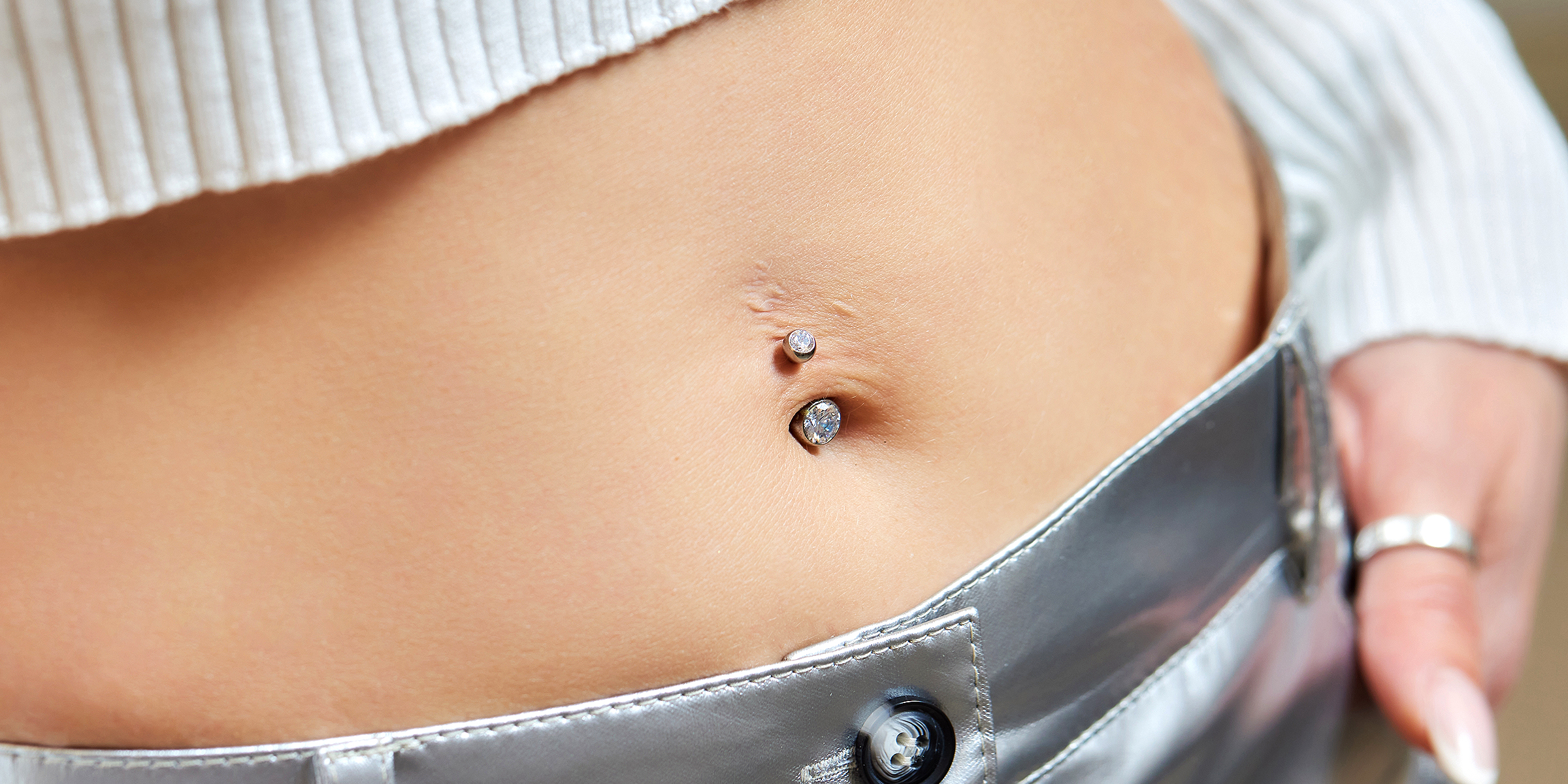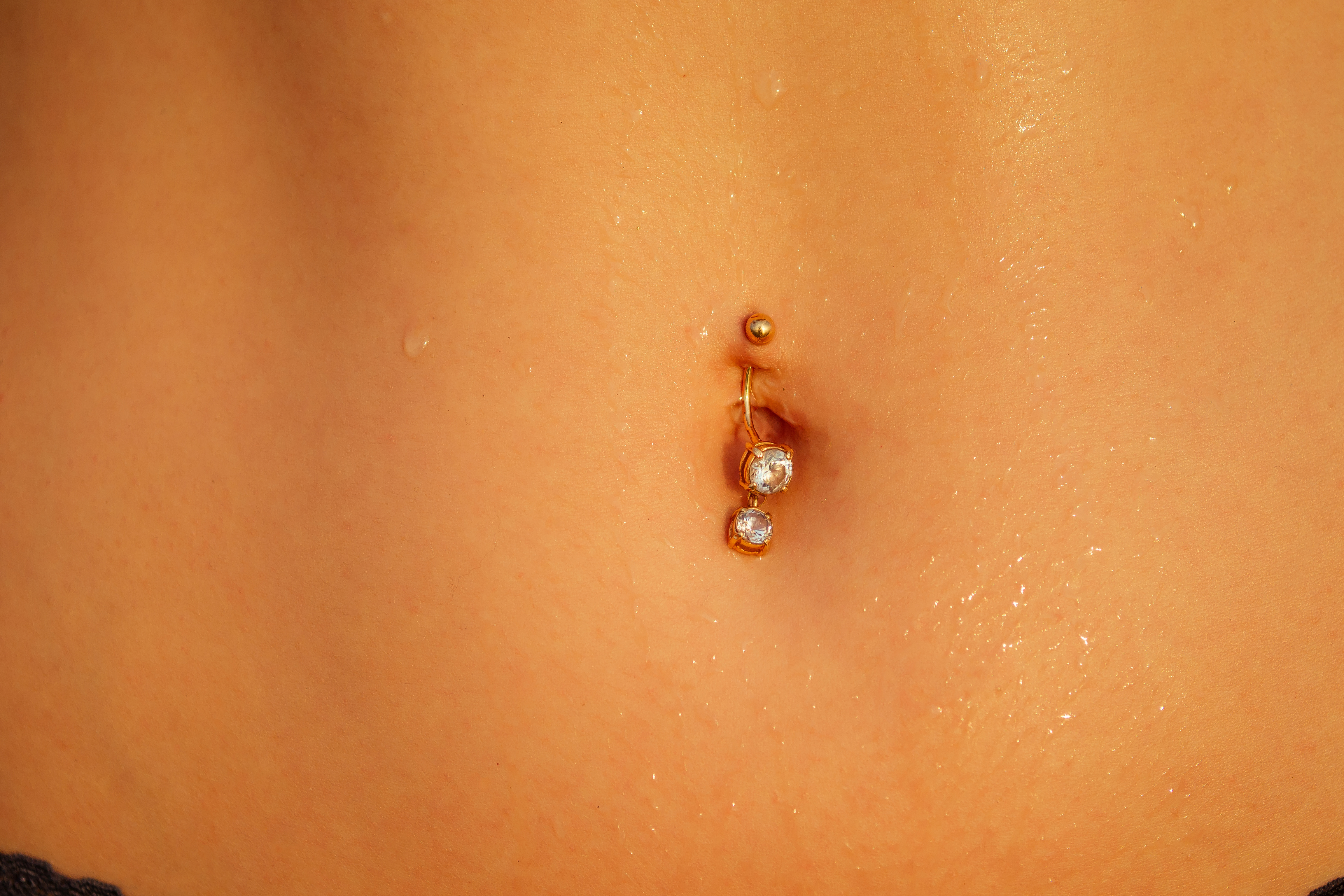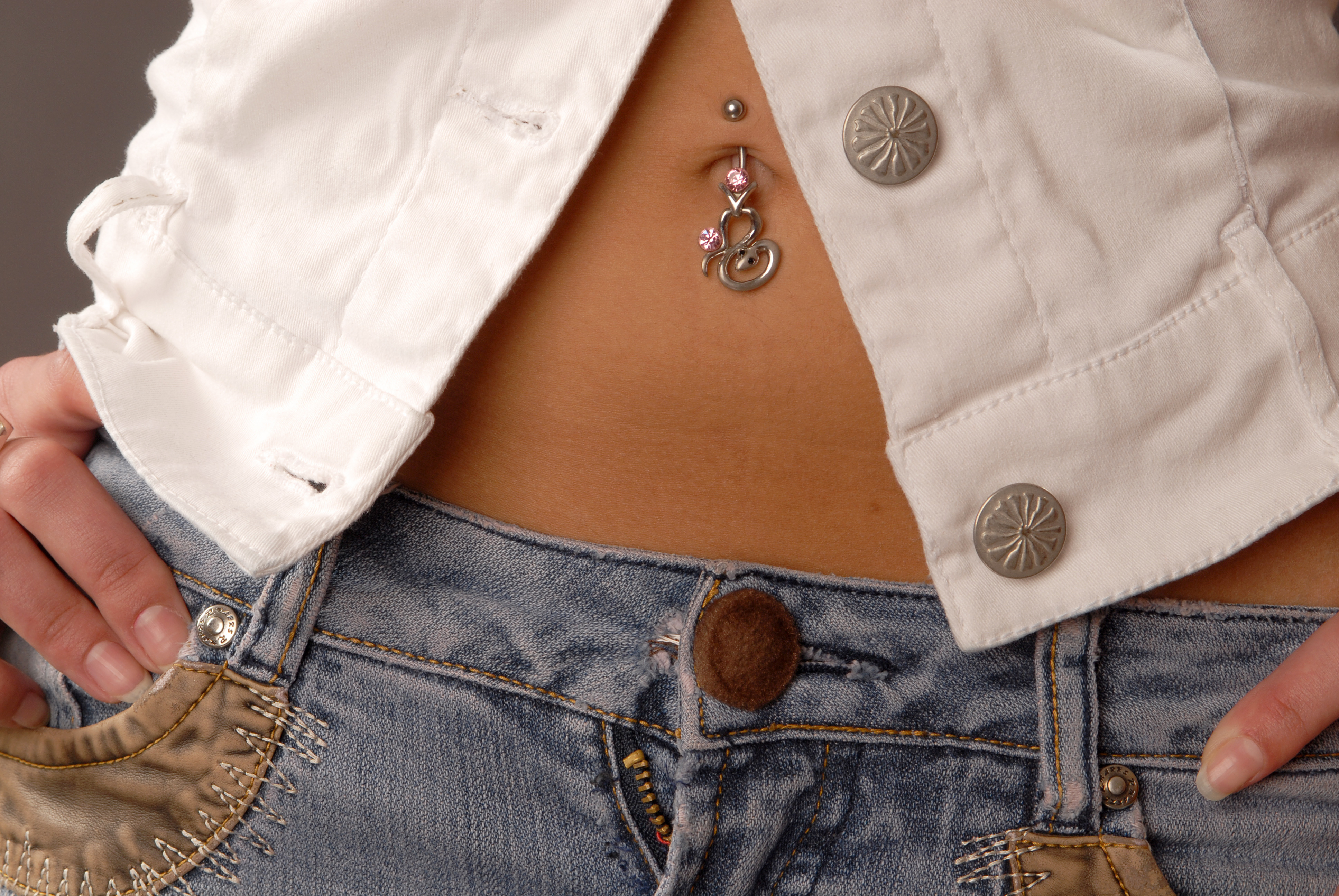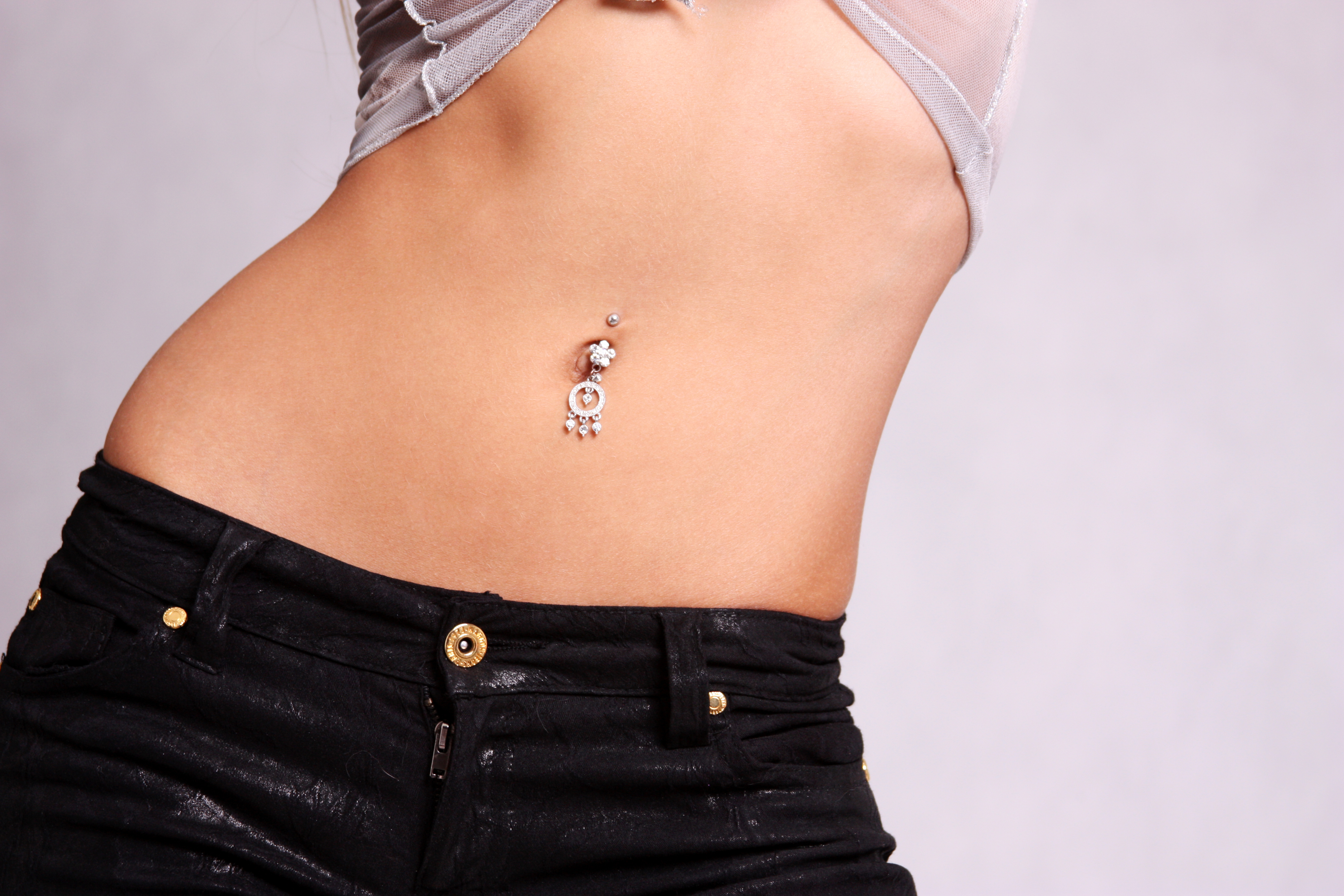
Hip Bone Piercing: Essential Aftercare Tips to Prevent Post-procedure Complications
Hip bone piercing is a piercing that stands out because they make a significant impact due to its edgy style. However, there are some tips to know before getting one, as proper aftercare is essential to prevent potential complications.
Hip bone piercings have gained popularity as a stylish and edgy form of body modification. However, it is crucial to prioritize proper aftercare to ensure a safe and successful healing process.
Before delving into aftercare, you must understand the basics of hip bone piercings, the different types, the placement, jewelry options, and potential risks. While hip bone piercings can be visually appealing, it is crucial to know the risks involved.

A photo of Belly piercing | Source: Shutterstock
A Guide to Hip Bone Piercings
With two main types of hip bone piercings, surface and dermal, each offering a distinct aesthetic, it's crucial to understand their differences and how they impact your overall appearance.
Surface hip piercings involve creating two piercing sites, an entry and exit point, through the skin. A small metal bar is then inserted to maintain an open hole, secured with a non-fixed ball at one end.

Belly Piercing | Source: Shutterstock
On the other hand, dermal piercings utilize an anchor and a top. A small anchor is inserted into a space created by puncturing the skin and secured with a flat, non-fixed top. The choice between surface and dermal hip piercings primarily relies on personal style and preference.
Opting for a surface piercing provides the impression of having two piercings, offering a dual effect. Conversely, selecting a dermal piercing creates the illusion of a piece of jewelry positioned flat against the skin, providing a sleek and unique aesthetic.

Belly Piercing | Source: Shutterstock
Complications of Hip Piercings: Understanding Rejection and Infection Risks
Hip piercings can bring various complications, some preventable, others influenced by your body's response. One common issue with surface piercings is rejection, where the body perceives the jewelry as a threat and attempts to push it out. It's crucial to consult a professional if this occurs.
It is advisable to follow your piercer's instructions on cleaning and protecting your new piercing.
Proper aftercare is essential to minimize the risk of infection, but it's important to be aware that it can still occur. Watch for signs of infection, including discharge, excessive redness, swelling, and an elevated temperature around the piercing. If you suspect an infection, seek medical attention promptly to receive proper diagnosis and treatment, which may include prescribed antibiotics.

Belly Piercing | Source: Shutterstock
When choosing jewelry for your hip bone piercing, selecting the appropriate options is vital for the longevity of the piercing and to minimize risks. Optimal choices include Tygon (PTFE), a non-reactive plastic, and surface (staple) barbells.
These jewelry options help reduce tension and stress on the tissues, decreasing the likelihood of migration and rejection. On the other hand, unsuitable options, such as captive bead rings (CBRs), banana barbells, and straight barbells, may increase the risk of complications and should be avoided.

Belly Piercing | Source: Getty Images
Importance of Proper Aftercare and Long-Term Healing Expectations
It is important to note that when piercings are performed and cared for, it's normal to experience irritation or allergic reactions than infections. Also, removing jewelry, even briefly, can cause the piercing channel to close rapidly, making it challenging or impossible to reinsert the jewelry.
Furthermore, removing the jewelry can cause more complications if an infection occurs. Getting a piercing is quick, but proper aftercare is crucial for successful healing.
It is advisable to follow your piercer's instructions on cleaning and protecting your new piercing. Regarding hip bone piercing, recovery ranges from two to six months with a dermal hook and a year or longer with a dermal bar.
